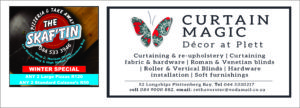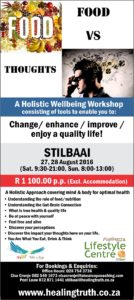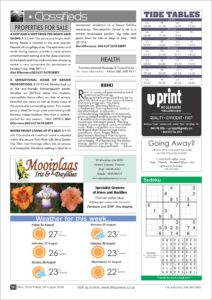CHOOSING YOUR CATS FOOD

Your cat adds so much to your life, and you want to feed her a healthy food, but with all of the choices out there, how do you know which food is best?
First of all, keep in mind that there is no one food that is best for every cat. There is no single food that will give every cat the brightest eyes, the shiniest coat, the most energy, and the best digestion. Cats are individuals just like people, which means that you could feed a brand of very well-formulated food to a group of cats and find that most of them do great on it, some not as well, and it may actually cause some gastrointestinal upset in a few cats. Luckily, there are many well-formulated cat foods to choose from today, and it is fine to try several to determine which one works best for your cat.
Understand a cat’s special nutritional needs:
Cats should not be fed dog or puppy foodCats have special nutritional needs. A food that is healthy for a dog can lead to health problems in a cat. Cats need more protein in their diet. They need certain amino acids, such as taurine and arginine. They need certain fatty acids, such as arachidonic acid and linoleic acid. Cats require a preformed Vitamin A, which is present only in foods of animal origin, and may be listed in cat foods as retinyl palmitate. Look for a food formulated specifically for cats.
Consider your cat’s stage of life:
Make sure that the food you choose is appropriate for your cat’s stage of life. A kitten eating an adult food will not get the higher amounts of calories, protein, vitamins, and minerals she needs for proper growth. An adult cat eating kitten food is likely to become overweight. An older cat may need a senior food that has fewer calories and is more easily digested. When it comes to nutrition, one size does not fit all.
Select a food type:
Cat eating dry cat foodPeople often wonder if they should feed dry food, semi-moist or canned. The answer is that it depends on the individual animal and the animal’s health status. Consult your veterinarian when trying to decide what type of food to feed your cat or kitten. To find out how the different types of food are made, see “How Pet Foods Are Manufactured.”
Look at the ingredients:
High-quality ingredients are essential for a healthy food. Some economy brands of cat food are made from inexpensive ingredients that are not easily digested, and therefore, do not provide the best nutrition. While they may technically meet the required specifications for percentages of protein, fat, carbohydrates, etc., these foods have lower energy values and lower-grade proteins. Because of this, many health-building nutrients may pass right through your cat’s system without being absorbed. It also means that you have to feed larger amounts of that lower quality food to provide your pet with the same nutrition as a smaller amount of premium food. When you compare the cost of these foods on a per-serving basis, and realize how quickly you go through a bag, economy foods may actually cost more in the long run.
When you are looking for a healthy food for your cat, reviewing the list of ingredients on the back of the bag is a good place to start. Pet food labels must list their ingredients by weight. Look for meat, fish, egg, or some type of meat meal or fish meal as the first or second ingredient. Meat, fish, and eggs all have a high biological value, which means they have a high percentage of protein in the form of digestible, usable amino acids.
The next thing to look at is the Guaranteed Analysis on the back of the bag. It is a chart that lists the percentages of various ingredients contained in that food. However, the numbers given in the Guaranteed Analysis are on an “as fed” basis and do not take into account the amount of moisture in that food. All pet foods have different levels of moisture; canned foods can have up to 80%, and dry foods can have as little as 6%. To determine the actual amount of an ingredient in a food, or to compare between brands or between wet and dry foods, the numbers need to be converted to what is called Dry Matter (DM) basis.
Check for the AAFCO statement:
To evaluate a particular cat food, compare the DM ingredient amounts to a nutrition chart such as the Association of American Feed Control Officials (AAFCO) Cat Food Nutrient Profiles. Cat foods labeled as ‘complete and balanced’ must meet standards established by AAFCO, either by meeting a nutrient profile or by passing a feeding trial.
Take your time in switching foods:
Switch a cat to a new food over the course of 7-10 daysWhen you have done some comparison and picked out a well-formulated food, make sure you allow ample time for your cat to make the transition from his current food to the new one. Normal bacteria in the intestine help your cat digest food. A sudden change in food can lead to changes in the number and type of these bacteria, making it harder for food to be digested, and resulting in intestinal upset. To avoid problems, switch to a new food slowly, over the course of at least 7-10 days. Start by mixing 25% new and 75% old food, and feed that for at least 3 days. If all goes well, go to 50% of each type of food for 3 days, then 75% new and 25% old for 3 days. By now, your pet should be ready to eat only the new food. If problems occur, consult your veterinarian for advice.
After you have done all you can to make sure a food is nutritionally sound, take a look at your cat after he has been on the new food for at least a month. Bright eyes, a shiny coat, good body condition (not too thin or overweight), and good energy will let you know you are doing a good job with your pet’s nutrition.
HOLISTIC WELLBEING WORKSHOP

Change/ enhance / improve / enjoy a quality life!
If you want a better quality of life OR know you need to make a lifestyle change, but don’t know where to start, then this is for you!
Topics that will be discussed:
A Holistic Approach covering mind & body for optimal health
Understanding the role of food/nutrition
Understanding the Gut-Brain Connection
What is true health & quality life
Be at peace with yourself
Feel free and alive
Discover your perceptions, how they determine your outlook and your health
Discover the impact your thoughts have on your life.
You Are What You Eat, Drink & Think
Basic Food Workshop Included (Whole-foods, Juicing, Blending, Bread, Salad Dressings etc.)
Learn more about:
- Ozone ; Oxygen therapies
- Thermography
- Live Blood Analysis
- Rebounding & Exercise
- Healthy delicious food
- Identifying toxins & bad influences on your physical being
- What your body needs to function optimally
- Essential oils
- Fermented Foods ; Pro-biotics
- Thermomix
Who can benefit from this seminar/workshop?
ANYBODY WHO WANTS TO LEARN MORE!
(For more see the advertisement)










